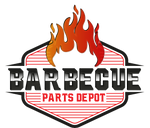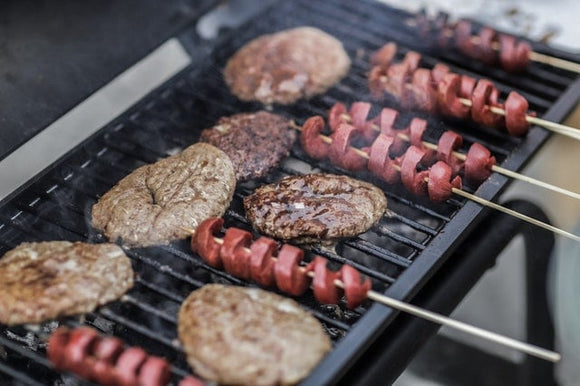
REAL FYRE GAS LOGS TROUBLESHOOTING | 11 DIYS
Real Fyre have been in the market for the past 65 years and they have been creating the most beautiful & reliable gas products since then. Their designs are proven to be authentic, aesthetically pleasing, and catering to the ever-changing requirements of the market which explains their popularity among customers.
Like other electronic appliances, your fireplace products should also be properly maintained and monitored for their proper functioning and to ensure longevity. This is why you must have a basic understanding of the Real Fyre products and know the basic troubleshooting techniques before you start using them.
Irrespective of how well you maintain your gas products, it’s going to develop some problem or the other in the future. This is where DIY troubleshooting methods can be of help. You are at the right place if you are looking out for some DIYs that can save you from making unnecessary service calls.
Here we are going to discuss those steps which you can do without a piece of deeper knowledge about the working principle or the technological know-how of your fireplace product. It is going to be an informative discussion from the most experienced heads.
Whether you own a G-45, G-46, G-22, or whichever fireplace product, we have decided to generalize the discussion so that every situation is under control. Let us do it part by part and start with the pilot.
Pilot Troubleshooting
- Pilot on your Real Fyre not lighting
The most common reason for the pilot in gas stoves, not lighting might be because of an obstruction in the tubing or the supply line. Start by inspecting the pilot tubing or the gas supply line to see if there are any obstructions in the piping or not. Once you are done with checking the pipe, check the gas pressure. If the pressure is found to be low, see if it is due to the air entrapped in the supply line.
If both aren’t the case, it must be due to the electrode or the IPI system malfunctioning which in case you have to make a service call.
- Pilot not staying lit?
It can be possibly due to inadequate gas supply. Check whether the thermocouple is worn out or cracked. If you are confident enough and you own a multimeter, check the voltage in the thermocouple and compare the voltage value with the ones given in the owner’s manual. If you find a difference in the voltage, get help from an authorized service engineer.
- Noise from the pilot
The noise from the pilot is commonly caused because of obstructions in the pilot hood. While there are DIYs to check the noises, we recommend calling an authorized service engineer for the job.
- Log set extinguishing?
If your log set is extinguishing automatically after lighting, it can be due to an inadequate gas supply. You have to check the gas pressure to increase the flame.
If your log set is extinguishing after 10 min to 1 hr, chances are that you have some issue with the thermocouple. The most common reason is overheating and you should call an authorized service engineer to get it repaired.
- Unable to turn off the valve with the remote?
Chances are that the valve is possibly overheated. You can ask for technical assistance for checking the heat shield, batteries, or the remote kit itself.
- Pilot not sparking even when the system is turned on?
The reasons for the pilot not sparking can be because of several reasons. It can be weak batteries, a bad AC adapter, shorted or loose connections, or other problems with the wiring setup. You can try replacing the batteries and using a spare AC adapter. If the problem persists, book a service request.
Burner Troubleshooting
Now that we have looked at some of the common problems pilots are prone to, let’s have a look at the burner which is susceptible to damage.
- Is the burner shutting down suddenly?
If the burner is shutting down suddenly, chances are that there is a drop in gas pressure. You can check whether any appliances connected to the gas line are leaking or kept open. If the problem persists, you should get help from an authorized service engineer.
- Low flame?
The most common reason for a low flame is the gas tank running low.
Other possible reasons are:
- Improper log setting for the type of gas that is used. You will have to consult the dealer to set it properly.
- If the gas supply is found to be less, you will need a plumber’s help to check the gas pressure reaching the burner at the orifice. You can ask the dealer or the plumber to keep the pressure at the right value.
- Connector kink or blockade can be another possible problem. You can try cleaning/replacing the connector.
- Check whether the valves are open fully.
- Uneven flame?
The burner orifice could be clogged. You have to clean it properly.
- Remote malfunctioning?
It can be possibly due to the receiver overheating. You can check the battery side and replace the batteries with new ones.
- Excessive shooting?
- The best way to deal with excessive shooting is to get help from an authorized service engineer. If you are confident enough, we have some DIYs you can try.
- The combustion is not complete which might be due to chimney blockage. See if you can get the chimney cleaned.
- Improper gas set or gas combination can also be the reason for excessive sooting. You have to replace the gas set or refill the gas after emptying the tank.
- Check whether the damper is closed. If it is closed, open it fully.
- Check whether the air mixture on the propane set is closed. If yes, open it completely.
The points discussed previously are the most common problems you will experience from your fireplace product. Keep in mind that we have discussed these points just to keep you informed. Any actions you take should be strictly adhered to the warranty/safety norms and according to the user manual.
For any queries or orders feel free to visit and contact us here.



